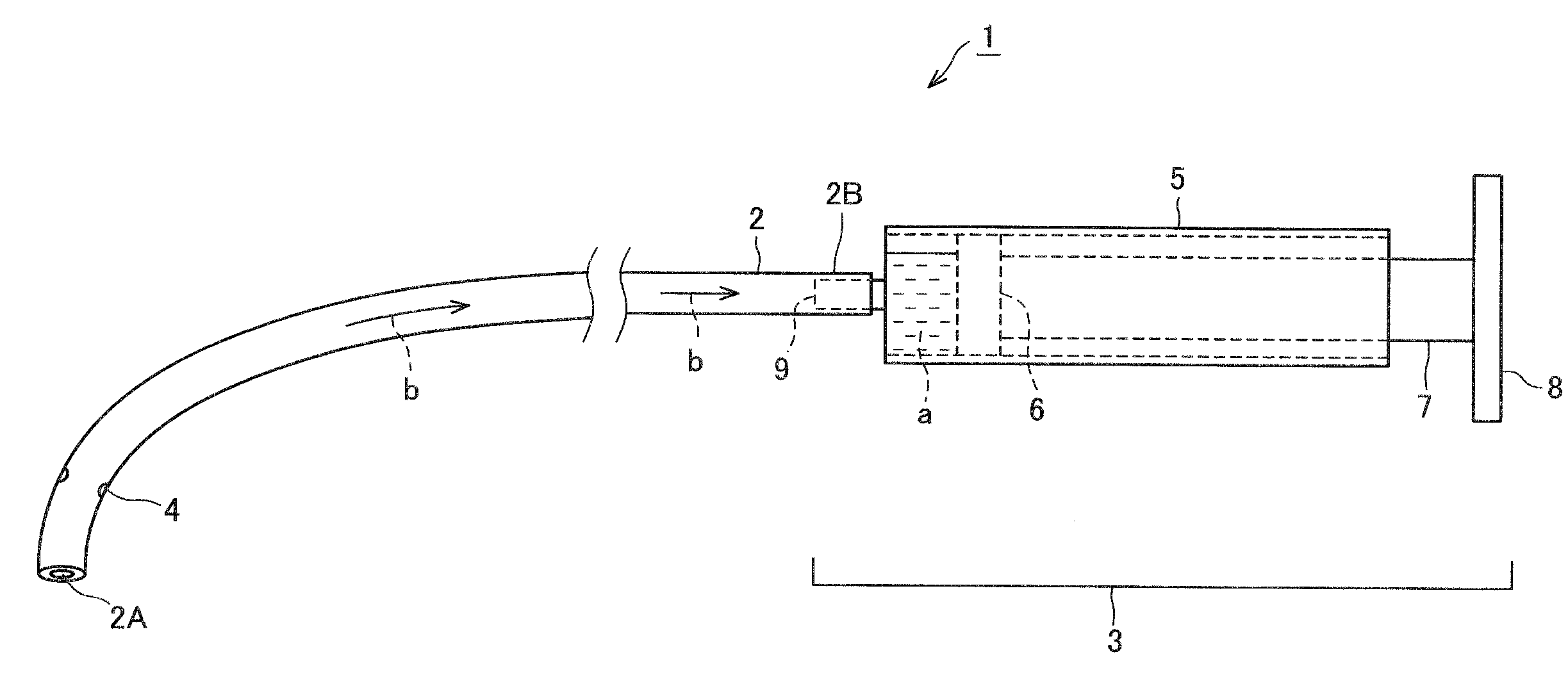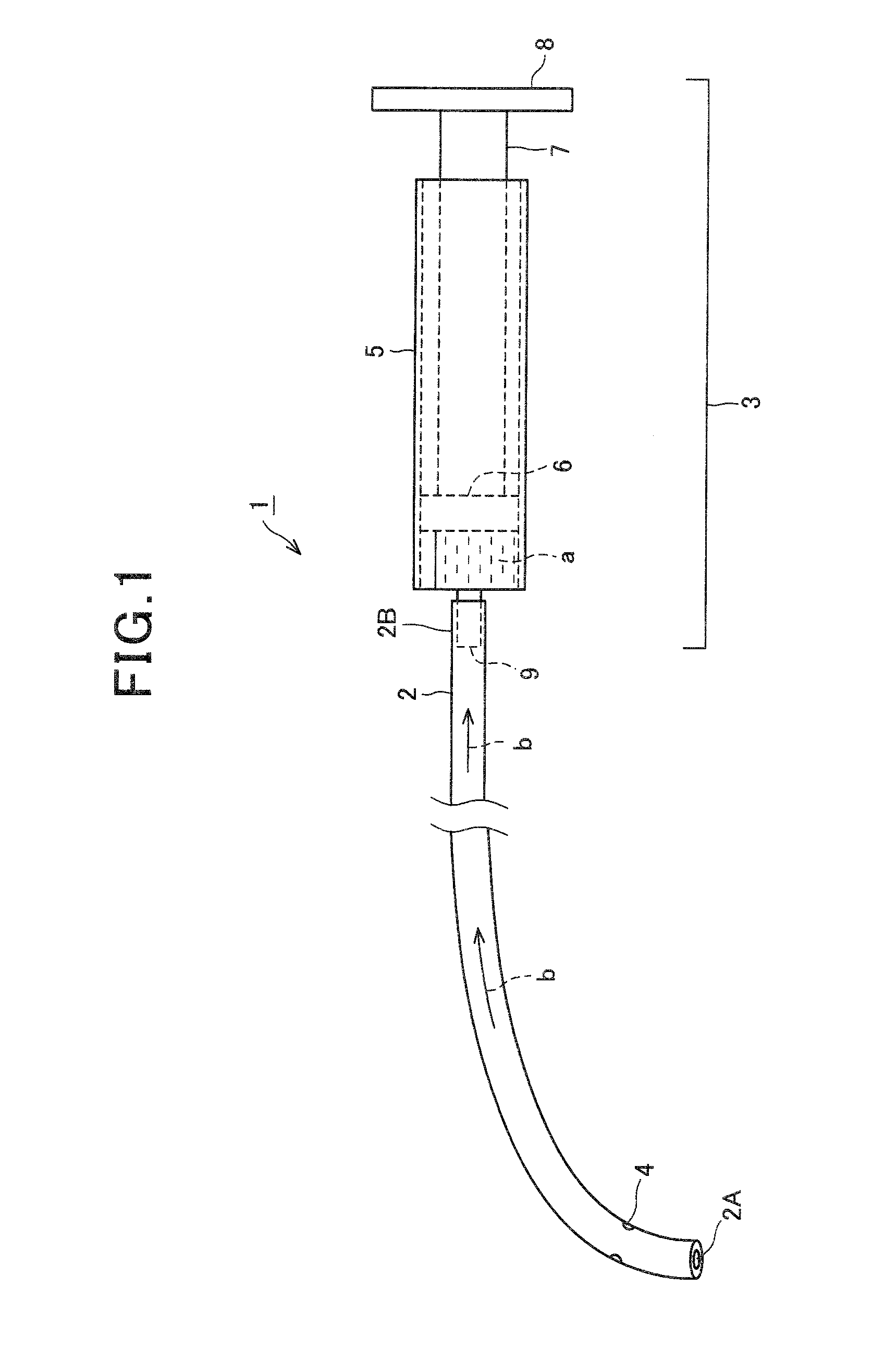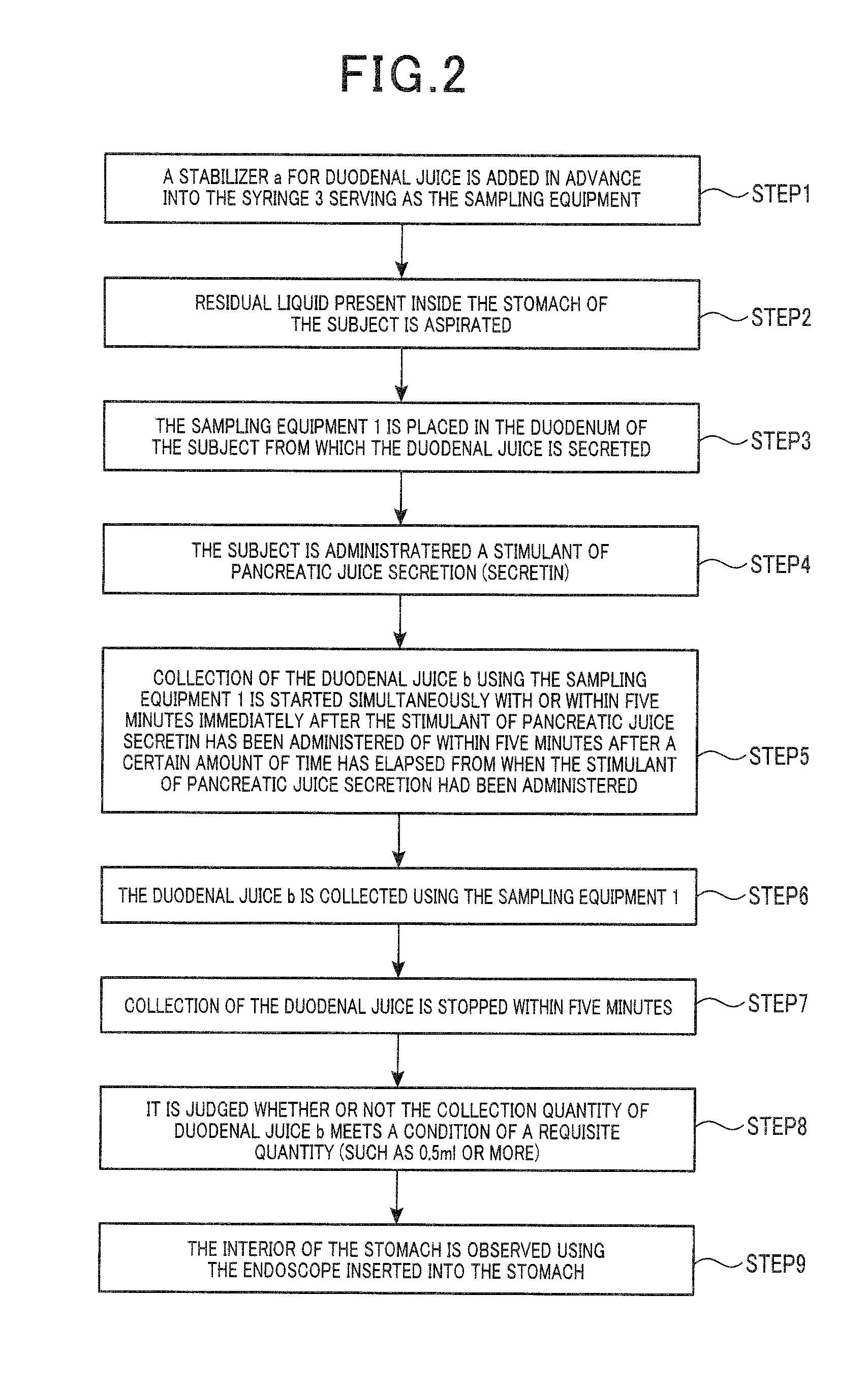Method of collecting specimen and method of diagnosing subject to detect upper digestive system disease
a technology of upper digestive system and specimen collection, which is applied in the direction of instruments, diagnostics, vaccination/ovulation diagnostics, etc., can solve the problems of not all doctors being able to easily perform the examination method, the method is invasive to patients, and the outcome is extremely poor. , to achieve the effect of improving the examination method and simplifying the examination method
- Summary
- Abstract
- Description
- Claims
- Application Information
AI Technical Summary
Benefits of technology
Problems solved by technology
Method used
Image
Examples
example 1
[0117]An upper gastrointestinal endoscope was inserted into 38 upper digestive system disease patients (32 pancreatic cancer patients (malignant) and 6 control group patients (benign) [2 IPMN patients, 1 pancreatic endocrine tumor (NET) patient, 1 MCN patient, 1 SCN patient, and 1 retention cyst patient]: diagnostic results based on postoperative pathological diagnostic results) after fasting overnight. Gastric juice c was aspirated from each patient. When the endoscope reached the duodenum 14, a catheter 2 for aspiration (PR-130Q manufactured by Olympus Medial Systems Corporation) was inserted into the forceps insertion opening of the endoscope and projected outward from the tip section of the endoscope. The duodenal juice b was present in a plurality of sites in the second position 14X and the third position 14Y of the duodenum 14. The duodenal juice b was collected from the tip side of the catheter 2. At this time, a 20 ml syringe 3 was connected to the base side of the catheter ...
example 2
[0128]In the present example, 32 cases of pancreatic disease patients (27 cases of pancreatic cancer, 5 cases in a control group [IPMN, NET, MCN, SCN, and retention cyst]) were subjected to examination. The effects of addition of a protease inhibitor were studied.
[0129]An upper gastrointestinal endoscope was inserted into the patients of the 32 cases of upper digestive system disease after fasting overnight. Gastric juice c was aspirated from the patients. When the endoscope reached the duodenum 14, a catheter 2 for collection (PR-130Q manufactured by Olympus Medial Systems Corporation) was inserted into the forceps insertion opening of the endoscope and projected outward from the tip section of the endoscope. The duodenal juice b was present in a plurality of sites in the second position 14X and the third position 14Y of the duodenum 14. The duodenal juice b was collected from the tip side of the catheter 2.
[0130]Here, the base side of the catheter 2 was bifurcated. The catheter 2 ...
example 3
[0136]In the present example, the IL-8 concentration in the duodenal juice b was measured using an ELISA kit (manufactured by R&D Systems Inc.). Here, the duodenal juice b was collected using the same method as that described in Example 2. The collected duodenal juice b was used as the specimen.
[0137]The results are shown in FIG. 9A and FIG. 9B as a box-plot. In FIGS. 9A and 9B, malignant indicates pancreatic cancer. Benign indicates the control group. The sensitivity (%) of IL-8 to pancreatic cancer is shown in Table 3.
TABLE 3Elapsed TimeFrom The StartOf CollectionOf DuodenalCut-OffJuiceValueSensitivitySpecificity(minutes)Inhibitor(pg / ml)(%)(n)(%)(n)2.5~5.0(−)1.53711 / 30804 / 57.5~10.0228 9 / 32835 / 62.5~5.0(+)25916 / 271005 / 57.5~10.016216 / 26674 / 6
[0138]As shown in FIG. 9A and FIG. 9B, it is has been found that the IL-8 concentration in the duodenal juice b significantly increases in the duodenal juice b after administration of secretin when the protease inhibitor is added, compared to when...
PUM
 Login to View More
Login to View More Abstract
Description
Claims
Application Information
 Login to View More
Login to View More - R&D
- Intellectual Property
- Life Sciences
- Materials
- Tech Scout
- Unparalleled Data Quality
- Higher Quality Content
- 60% Fewer Hallucinations
Browse by: Latest US Patents, China's latest patents, Technical Efficacy Thesaurus, Application Domain, Technology Topic, Popular Technical Reports.
© 2025 PatSnap. All rights reserved.Legal|Privacy policy|Modern Slavery Act Transparency Statement|Sitemap|About US| Contact US: help@patsnap.com



